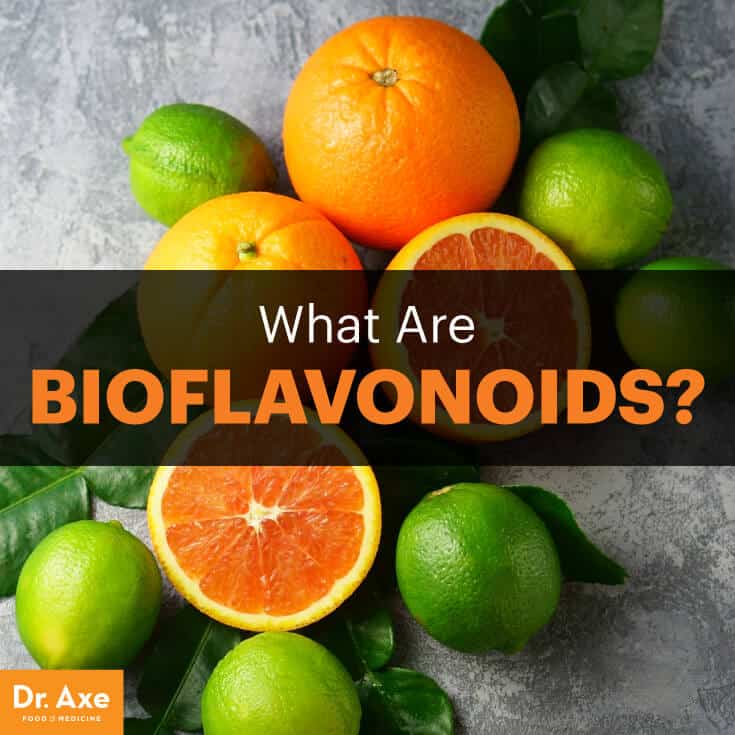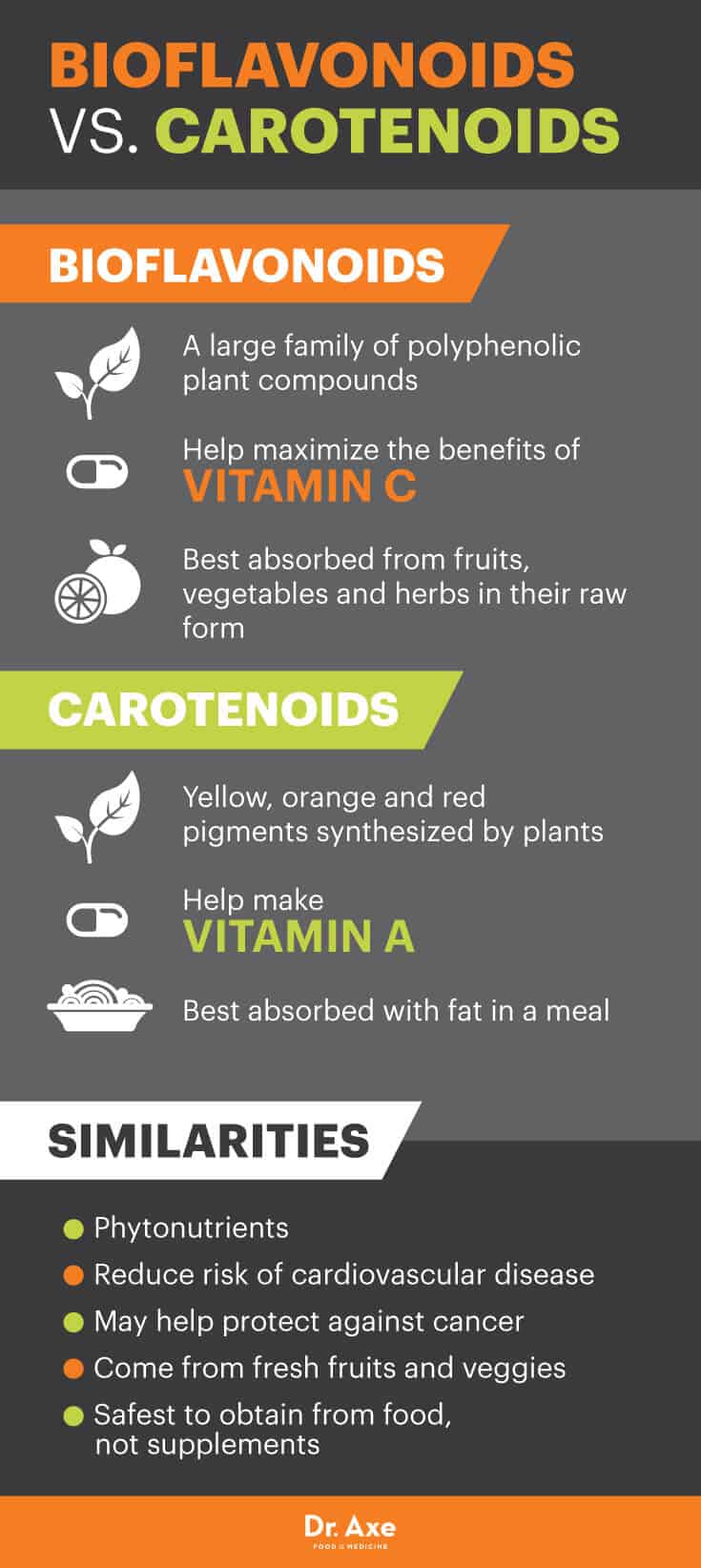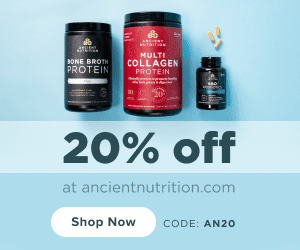This Dr. Axe content is medically reviewed or fact checked to ensure factually accurate information.
With strict editorial sourcing guidelines, we only link to academic research institutions, reputable media sites and, when research is available, medically peer-reviewed studies. Note that the numbers in parentheses (1, 2, etc.) are clickable links to these studies.
The information in our articles is NOT intended to replace a one-on-one relationship with a qualified health care professional and is not intended as medical advice.
This article is based on scientific evidence, written by experts and fact checked by our trained editorial staff. Note that the numbers in parentheses (1, 2, etc.) are clickable links to medically peer-reviewed studies.
Our team includes licensed nutritionists and dietitians, certified health education specialists, as well as certified strength and conditioning specialists, personal trainers and corrective exercise specialists. Our team aims to be not only thorough with its research, but also objective and unbiased.
The information in our articles is NOT intended to replace a one-on-one relationship with a qualified health care professional and is not intended as medical advice.
Eat Bioflavonoids for Improved Heart Health
June 14, 2017

We know that fruits and vegetables are potent health-promoting items easily within our grasp, but do we know why they’re so incredibly beneficial to our bodies? You probably already knew that they’re rich in vitamins, but you might not have known that they’re also loaded with bioflavonoids. Since the 1990s, there has been a growing interest in dietary bioflavonoids due to their likely contribution to the health benefits of diets rich in fruits and vegetables.
Bioflavonoids, or flavonoids, are a large class of powerful phytochemicals. Not only are bioflavonoids impressive in and of themselves, but they also help maximize the benefits of vitamin C by inhibiting its breakdown in the body. The great thing is that bioflavonoids are often found in many of the top vitamin C foods.
What do broccoli, kale, red onions, hot peppers, rutabaga, spinach and watercress have in common? They’re all vegetables that top the charts, specifically the USDA Flavonoid Database, for their high bioflavonoid content. (1) As such, you should consume these bioflavonoid foods because they’ve been shown to have antiviral, anti-allergy, anti-inflammatory and antitumor abilities. (2)
What Are Bioflavonoids?
Bioflavonoids — aka flavonoids or “vitamin P” — naturally occur in pretty much all fruits, vegetables and herbs. Chocolate, tea and wine, as well as some dry beans and seeds, also contain vitamin P. Flavonoids are a large family of over 5,000 hydroxylated polyphenolic compounds that carry out key functions in plants, such as attracting pollinating insects, fighting environmental stresses and modulating cell growth. In humans, their bioavailability and biological activities appear to be strongly influenced by their chemical nature.
Bioflavonoids can be broken down into several categories. Although dividing them into categories is not universally agreed upon, one common breakdown includes isoflavones, anthocyanidins, flavans, flavonols, flavones and flavanones. Some of the best-known flavonoids, like the quercetin found in onions and the genistein found in soy, can be considered subcategories of categories. (3) Flavonoids also include rutin, citrus flavonoids and hesperidin.
In general, the more colorful a food item is, the richer it is in flavonoids. The ability of flavonoids to positively impact the human body in a large variety of ways appears to be related to their ability to regulate cell signaling. Flavonoids have been shown to exhibit anti-inflammatory, antithrombogenic, antidiabetic, anticancer and neuroprotective activities.
Related: Fisetin: A Senolytic Antioxidant for Healthy Aging & More
Benefits
Bioflavonoids have been scientifically proven to help with the following:
1. Varicose Veins
Varicose veins occur more commonly in women than men, but up to 60 percent of people in the U.S. have this common health concern. They develop when your veins stretch and their valves, which stop blood from flowing backward, don’t work properly anymore, allowing flood to flow backward and pool in your veins. The good news is that you can fight varicose veins with a healthy diet.
Rutin is a type of bioflavonoid that may support the walls of your veins and help them work better. A number of studies have shown that flavonoids that come from rutin relieve swelling, aching and pain from varicose veins. Rutin is found in fruits and fruit rinds (especially citrus fruits), buckwheat and asparagus.
Additionally, oligomeric proanthocyandin complexes (OPCs) may decrease vein leakage and swelling in the legs. OPCs are bioflavonoids found in grapeseed and pine bark. Similar flavonoids are also found in cranberry, hawthorn, blueberry and other plants. (4)
2. Hemorrhoids
Up to 75 percent of people experience hemorrhoids at some point in their lives. Hemorrhoids are caused by an increase in pressure on the veins of the anus and rectum. They can be very uncomfortable or even painful, but bioflavonoids are a natural way to prevent and heal unpleasant hemorrhoids.
Studies have shown that bioflavonoids can improve microcirculation, capillary flow and vascular tone, all of which are key in the natural treatment of hemorrhoids. Bioflavonoid consumption can help you avoid the lengthy and possibly expensive complications of hemorrhoids. (5)
3. Cardiovascular Health
Several prospective cohort studies conducted in Europe and the U.S. have examined the relationship between some measure of dietary flavonoid intake and cardiovascular disease.
A recent meta-analysis of 14 prospective studies published between 1996 and 2012 reported that higher intakes in each flavonoid subclass were significantly associated with a reduced risk of cardiovascular issues. (6)
4. Hepatitis
Hepatitis is a a disease characterized by inflammation of the liver. The flavonoid catechin (found in high amounts in matcha green tea) has been shown in some studies to help people suffering from acute viral hepatitis as well as chronic hepatitis. A typical amount of catechin used in successful trials is 500 to 750 milligrams three times per day. (7)

5. Bruises
Bruises to the body occur when blood vessels break, due to some kind of force, and leak blood into areas under the skin. The main symptoms of a bruise are skin pain, skin discoloration and swelling.
Bioflavonoids are often recommended along with vitamin C for people who bruise easily. Bioflavonoids help strengthen the capillaries, which makes them helpful for healing bruises. Bioflavonoids, especially citrus flavonoids, may also increase the effectiveness of vitamin C.
A small, preliminary trial in Germany, conducted by the Department of Dermatology at the Saarland University Hospital and published in the Journal of the American Academy of Dermatology, gave subjects with progressive pigmented purpura (a chronic bruising disorder) 1,000 milligrams per day of vitamin C and 100 milligrams per day of the flavonoid rutin. After four weeks, noticeable bruising was no longer apparent and did not recur in the three-month period after treatment was stopped. (8)
6. Cold Sores
Cold sores are caused by the herpes simplex virus, an infection that may cause only a single cold sore or an outbreak of several cold sores. Until a cold sore is scabbed or crusted, it’s extremely contagious and can even be spread to other parts of the body, including the eyes and genitals. Bioflavonoids combined with vitamin C may help speed cold sore healing.
In one study published in Oral Surgery, Oral Medicine, and Oral Pathology, people with herpes infections received either a placebo or 200 milligrams of vitamin C plus 200 milligrams of flavonoids, each taken three to five times per day. Compared with the placebo, vitamin C and flavonoids reduced the duration of cold sore symptoms by 57 percent. (9) This shows bioflavonoids can naturally treat herpes and cold sores.
7. Allergies
The bioflavonoid quercetin found in onion, citrus fruit, pineapple and buckwheat is very commonly used in the treatment of allergies. Quercetin is a natural antihistamine and an anti-inflammatory that can lower the effects of seasonal allergy symptoms and food allergies, as well as asthma and skin reactions.
It can help stabilize the release of histamines from certain immune cells, which results in decreased unpleasant allergy symptoms like coughs, watery eyes, runny noses, hives and indigestion. Research published in the Iran Journal of Allergy, Asthma, and Immunology shows that quercetin fights allergies as well as some prescription medications, all with little to no side effects. (10)
8. Hypertension
Many studies have shown that consumption of fruit, vegetables, tea and wine may protect against stroke. The major risk factor for stroke is hypertension or high blood pressure.
A study from the Division of Occupational and Environmental Medicine at theMount Sinai School of Medicine’s Department of Community and Preventive Medicine in New York hypothesized that people with hypertension have lower circulating flavonoid levels, which means that increased consumption of flavonoid-rich foods could decrease rates of hypertension. Lowering blood pressure through increased dietary consumption of bioflavonoids may decrease the rate of end-organ damage that’s secondary to hypertension. (11)
Another study published in the American Journal of Clinical Nutrition found that certain flavonoids like anthocyanins and some flavone and flavan-3-ol compounds may contribute to the prevention of hypertension. (12)
Related: Apigenin: Top 9 Benefits of the Most Widely Distributed Plant Flavonoid
Top Sources
Consuming fresh fruits, vegetables and herbs is without a doubt the best way to take in bioflavonoids. Chocolate, tea and wine in moderation can also be healthy sources, as are some spices, nuts, dry beans and seeds. Flavonoids are often concentrated in the skins and outer portions of fruits and vegetables so these portions of the foods are excellent to consume. It’s also best to consume fruits, vegetables and herbs in their raw forms to receive the highest amount of flavonoids.
Here are some bioflavonoid-rich food items you’ll want to be taking in regularly:
Fruit
Fresh fruit, especially citrus fruits, berries and tree fruits, are awesome choices when it comes to bioflavonoids. Strawberries, grapes, apples, cranberries and blackberries are high in the bioflavonoid ellagic acid. Citrus fruits like lemons, limes, oranges, tangerines and grapefruits are rich in citrus bioflavonoids. Apples, peaches and plums are rich in the flavonoid flavan-3-ol.
Vegetables
Feel free to eat any and all vegetables, particularly green and red ones, to obtain your daily dose flavonoids. Broccoli, kale, onions (red, yellow and spring), red and hot peppers, rutabaga, spinach, and watercress are some of the heavy hitters when it comes to flavonoids. Red and green onions are especially high in quercetin. Artichokes and celery are high in the flavones, while okra and broccoli are high in flavonols.
Fresh oregano, parsley, peppermint and thyme are high in the flavonoid known as flavone. Cinnamon is a great choice when it comes to spices as well.
Tea
Black, green and red (rooibos) tea are great beverage choices to up your flavonoid intakes. These tea varieties have all been shown to be high in catechins and flavonols. Moringa tea is also a great choice.
Chocolate
Flavanols are the main type of flavonoid found in pure cocoa as well as chocolate (made from cocoa and cocoa butter). One ounce of high-quality dark chocolate — that’s organic with a high cocoa percentage and low sugar content — is a good daily amount.
Wine
Both red and white wine contain flavonoids, but red wine has higher levels since fermentation occurs in the presence of grape skins, the source of significant amounts of flavonoids. So if you drink already, then wine, specifically red wine in moderation, can be a healthy choice. Moderation means not more than one glass per day for women and not more than two glasses per day for men.
Nuts, Beans and Seeds
The soybean is particularly high in bioflavonoid, especially isoflavones like genistein and daidzein. Dark beans — such as black beans and kidney beans, as well as garbanzo, pinto and fava beans — are rich in bioflavonoids. When it comes to nuts, pecans, walnuts, pistachios and cashews are great choices.
Buckwheat is often mistaken for a grain, but it’s actually a nutrient-packed, gluten-free seed that’s particularly high in the bioflavonoids quercetin and rutin.
Bioflavonoids vs. Carotenoids
You might be wondering what the difference is between bioflavonoids and carotenoids. This is understandable, since both come from similar sources and have similar benefits. Here’s how the two stack up:
- The best known phytonutrients are the carotenoids, flavonoids, polyphenols, indoles, lignans and isoflavones.
- Flavonoids are a large family of polyphenolic plant compounds, while carotenoids are yellow, orange and red pigments synthesized by plants.
- Diets high in bioflavonoids and diets high in carotenoids are both associated with reduced risk of cardiovascular disease.
- Dietary flavonoids are naturally occurring in fruit, vegetables, chocolate, and beverages like wine and tea.
- The body can make all the vitamin A it needs from plant-derived carotenoids, while bioflavonoids are commonly found in foods alongside vitamin C. The bioflavonoids help maximize the benefits of vitamin C by inhibiting its breakdown in the body.
- To date, there is hope yet little evidence that flavonoid-rich diets might protect against various cancers, but studies of carotenoids have already shown positive outcomes for lung and prostate cancer.
- Fresh fruits and vegetables are the best sources of bioflavonoids and carotenoids.
- It’s healthiest and safest to obtain both bioflavonoids and carotenoids from dietary sources rather than supplements.
- Carotenoids are best absorbed with fat in a meal. Chopping, puréeing and cooking carotenoid-containing vegetables in oil generally increases the bioavailability of the carotenoids they contain.
- Bioflavonoids are best absorbed from fruits, vegetables and herbs in their raw forms.

Risks and Side Effects
There are no consistent side effects that have been linked with bioflavonoids except for supplemental catechin, which can occasionally cause fever and anemic symptoms from breakdown of red blood cells and hives.
High intakes of dietary flavonoids are generally regarded as safe. However, I don’t recommend extra large amounts of supplemental bioflavonoids, which might be harmful to your health rather than helpful. While obtaining bioflavonoids from food sources is very safe, getting you bioflavonoids from supplements is more controversial.
Some studies have linked large doses of bioflavonoids with childhood leukemia. (12) To be on the safe safe side, it’s best to obtain your bioflavonoids from food rather than supplements, especially if you’re pregnant, nursing or a child.
Bioflavonoid supplements may affect the action of anticoagulants and increase the toxicity of a wide range of drugs when taken concurrently. Talk to your doctor before supplementing with bioflavonoids if you have any ongoing health concerns and currently take other medications.
Final Thoughts
- Fresh fruits and vegetables are the best sources of bioflavonoids.
- Bioflavonoids are also found in herbs, spices, beans, nuts, seeds, tea and wine.
- They’re excellent for the overall health of your entire body at any age.
- Bioflavonoids are best absorbed from fruits, vegetables and herbs in their raw forms.
- They’ve specifically been shown to help prevent and naturally treat varicose veins, hemorrhoids, cardiovascular problems, hepatitis, bruises, cold sores, allergies and hypertension.
- It’s healthiest and safest to obtain bioflavonoids from dietary sources rather than supplements










